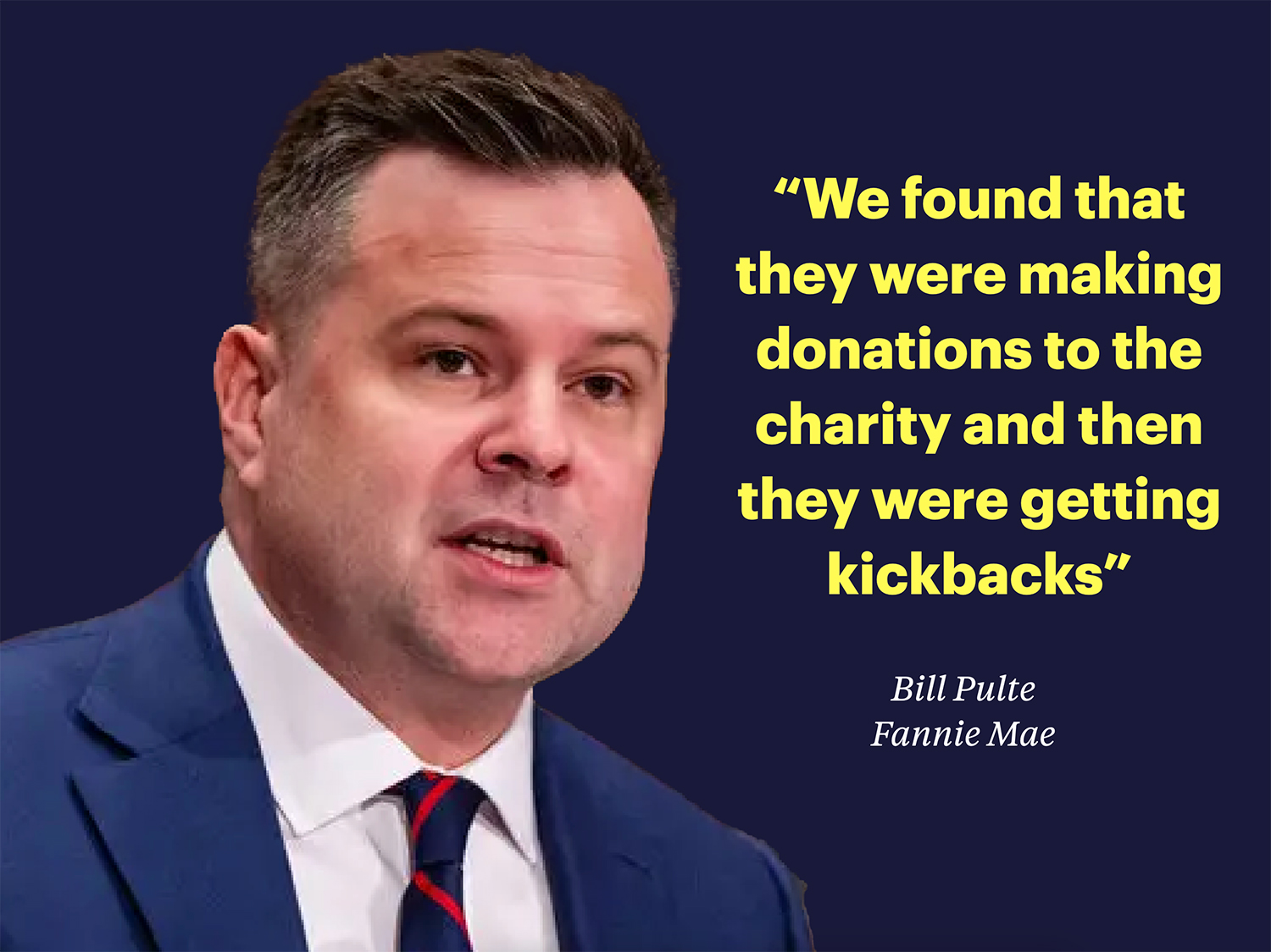More than 200 Fannie Mae employees have been fired after an internal investigation detected a widespread charity fraud scheme involving their matching donation program.
The fired employees allegedly exploited the agencies matching gift program by accepting kickbacks for their donations. According to reports, the employees made donations to a non profit TANA, which Fannie Mae would match, and then TANA would return their donation.
In some cases the employees even requested “commissions” for their participation.

Matching Donation Programs Are A Target
At the heart of the investigation is the non profit the Telegu Association of North America also called TANA. A senior Fannie Mae employee reportedly held a role there as a Regional Vice President which is were they allude the collusion may have started.
Fannie Mae isn’t the first major organization to report donation fraud with the non profit. In January, Apple fired 185 employees in a similar kickback scheme with the organization. Some believe Apple was targeted because they matched donations at a 2:1 ratio.

TANA wasn’t the only non profit involved. There were others mentioned including Hop4Kids and ACICE.
In that case, employees allegedly coordinated with certain charities to create fraudulent records and transfer matching funds back to themselves.
Some Fired For Working From China or Working Two Jobs
Apparently, it wasn’t just donation fraud that got Fannie Mae employees terminated, other issues arose as well during audits.
In a recent interview, Bill Pulte, the Director of Fannie Mae indicated that some employees were fired for working from China.
They discovered it when IP addresses of employees working remotely had been audited to determine their locations. He said their locations were then mapped against where the employees had swiped in from at the start of their workday. He claimed some employees appeared to have people swiping in for them, so they could work remotely from China.
“Potentially, people are having friends or family swipe in, but then they’re actually working in China,” he said.
In other cases, employees were working multiple jobs. We “found that multiple people were working two jobs.”, he said in an interview.



